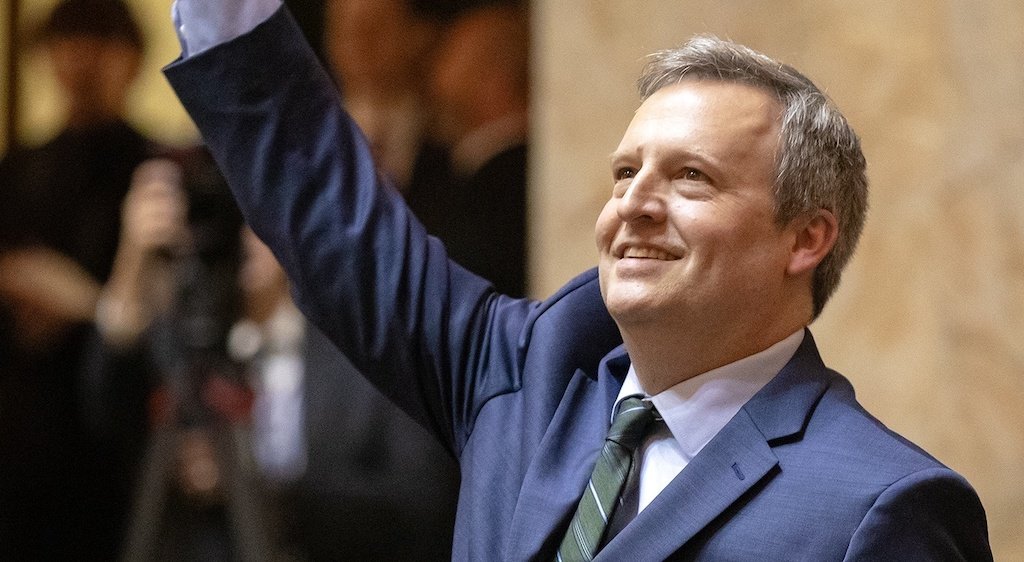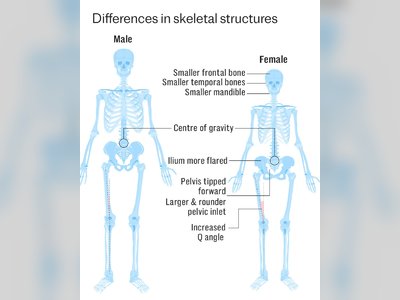
Washington’s Public Lands Commissioner Navigates Trump Administration Shift Toward Revenue-Driven Federal Land Policy
Commissioner Dave Upthegrove warns of strain on forest health, federal-state collaboration and conservation as policy realignment unfolds
Washington State Commissioner of Public Lands Dave Upthegrove has sounded the alarm over a series of federal-government proposals to monetise public lands, cut agency funding and shift key disaster-response functions to states, warning that the sweep of changes could unsettle forest-health efforts, wildfire coordination and trust-land revenues.
Under the Trump administration, senior Interior-department officials have referred to federal lands as part of the country’s “balance sheet,” pressing for expanded oil, gas and timber extraction, rollback of the Roadless Rule and increased commercialisation.
At a time when nearly 30 percent of Washington’s land is federally owned—and roughly 90 percent of such lands are in Western states—Upthegrove says the implications are profound.
“These are our lands—they belong to we, the people,” he said.
“The vision here in Washington is managing for the public interest.”
Upthegrove highlighted the impact of the current government shutdown on public-land management.
Federal rangers, foresters and biologists remain furloughed, delaying wildfire-prep treatments and weakening Good Neighbor Authority agreements that enable state-federal forest health collaboration.
He warned that once the shutdown drags on, “we’re losing time on forest health treatments, prescribed burns, at a moment when we need to be doing that work to prepare for wildfire season.”
On the administration’s plan to unify federal fire-fighting arms into a U.S. Wildland Fire Service, Upthegrove offered cautious support: “A single federal entity could be beneficial—but coordination with state and local jurisdiction is essential.” He emphasised the need for the federal government to remain a reliable partner, saying “we aren’t able to replace” the large-scale disaster-response role now performed by the federal system.
Regarding the proposed sale or transfer of federal lands, the commissioner noted his state’s contrasting approach: “Our lands don’t belong to industry… they belong to we, the people.
… The notion of clear-cutting national forests to pay for tax cuts is offensive and sells out future generations.” Washington has instead identified 77,000 acres of older “structurally-complex” state forestland for conservation and is exploring carbon and ecosystem-services markets as revenue alternatives.
On the distribution of benefits from legacy and trust lands—historically used to fund schools and counties—Upthegrove said the tension between economic return and environmental stewardship will persist.
“We have to strike the appropriate balance,” he observed, as his department proposes legislation for 2026 aimed at diversifying revenue streams beyond timber harvests.
The commissioner described the broader shift in federal land-policy as part of an “asset-maximisation” agenda being driven by Washington D.C.—one that must be managed carefully to protect long-term public values, habitats, and climate resilience, not just short-term revenue gains.
The evolving federal-state landscape places Washington in the frontline of a resource-policy realignment, with the commissioner calling on state and local governments to remain vigilant as changes to the balance between extraction, conservation and public-benefit use of lands take shape.
Under the Trump administration, senior Interior-department officials have referred to federal lands as part of the country’s “balance sheet,” pressing for expanded oil, gas and timber extraction, rollback of the Roadless Rule and increased commercialisation.
At a time when nearly 30 percent of Washington’s land is federally owned—and roughly 90 percent of such lands are in Western states—Upthegrove says the implications are profound.
“These are our lands—they belong to we, the people,” he said.
“The vision here in Washington is managing for the public interest.”
Upthegrove highlighted the impact of the current government shutdown on public-land management.
Federal rangers, foresters and biologists remain furloughed, delaying wildfire-prep treatments and weakening Good Neighbor Authority agreements that enable state-federal forest health collaboration.
He warned that once the shutdown drags on, “we’re losing time on forest health treatments, prescribed burns, at a moment when we need to be doing that work to prepare for wildfire season.”
On the administration’s plan to unify federal fire-fighting arms into a U.S. Wildland Fire Service, Upthegrove offered cautious support: “A single federal entity could be beneficial—but coordination with state and local jurisdiction is essential.” He emphasised the need for the federal government to remain a reliable partner, saying “we aren’t able to replace” the large-scale disaster-response role now performed by the federal system.
Regarding the proposed sale or transfer of federal lands, the commissioner noted his state’s contrasting approach: “Our lands don’t belong to industry… they belong to we, the people.
… The notion of clear-cutting national forests to pay for tax cuts is offensive and sells out future generations.” Washington has instead identified 77,000 acres of older “structurally-complex” state forestland for conservation and is exploring carbon and ecosystem-services markets as revenue alternatives.
On the distribution of benefits from legacy and trust lands—historically used to fund schools and counties—Upthegrove said the tension between economic return and environmental stewardship will persist.
“We have to strike the appropriate balance,” he observed, as his department proposes legislation for 2026 aimed at diversifying revenue streams beyond timber harvests.
The commissioner described the broader shift in federal land-policy as part of an “asset-maximisation” agenda being driven by Washington D.C.—one that must be managed carefully to protect long-term public values, habitats, and climate resilience, not just short-term revenue gains.
The evolving federal-state landscape places Washington in the frontline of a resource-policy realignment, with the commissioner calling on state and local governments to remain vigilant as changes to the balance between extraction, conservation and public-benefit use of lands take shape.












